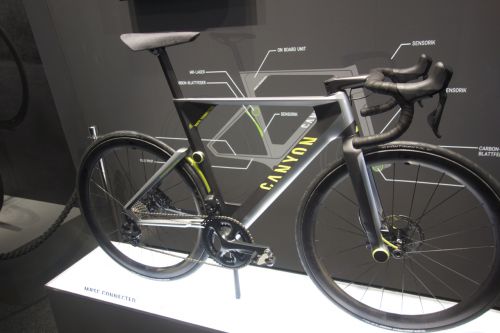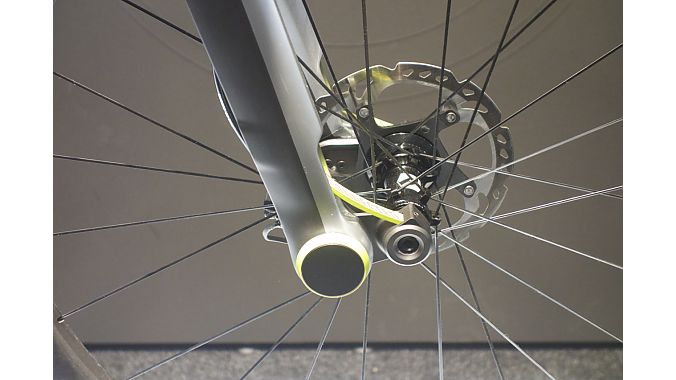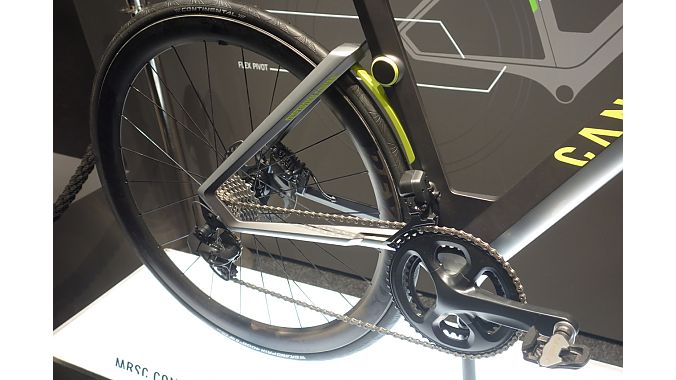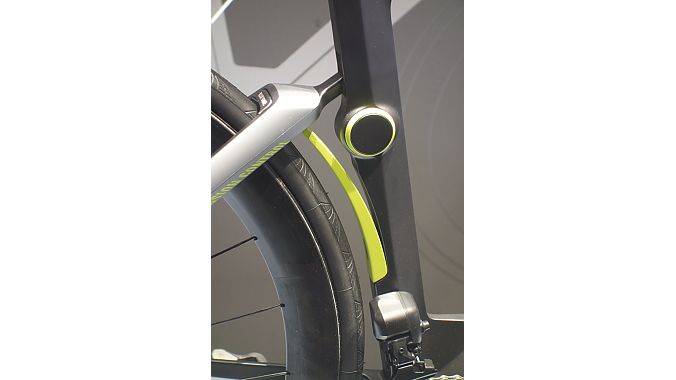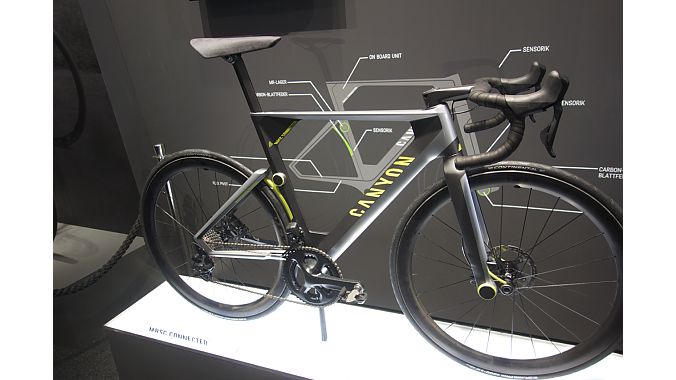FRIEDRICHSHAFEN, Germany (BRAIN) — BMC’s Impec concept bike wasn’t the only theoretical display bike on show at Eurobike. Canyon Bicycle, which is not distributed in the U.S. currently, showed a wild idea for a totally wired (and wireless) high-performance full-suspension road bike.
The Canyon MRSC is far from production — the frame on display, behind ropes, was a product of a 3D printer, although the fork was functional — but it uses currently available technology. The most notable concept was designers’ decision to hide the bike’s most innovative features. Most of the innovative features happen in the background from the rider's perspective, and the bike would not look out of place among other high-end road bikes. In fact the suspension is so subtle and integrated that Canyon decided to paint some parts neon yellow to call attention to the system.
The front and rear suspension both rely on carbon leaf springs and provide 10-15 mm of travel. Damping is performed by pivot bearings packed with electro-magnetized fluid. By modifying the electric charge sent through the fluid, the suspension action can be set for smooth or rough roads. Some cars, including some Audis, use similar technology.
But there are no dials or switches to control the suspension; it all happens in the background without direct rider input. A sensor in the frame detects the road conditions and adjusts the suspension automatically.
That’s just the start of the bike’s electronic bells and whistles. It has a GPS sensor that records the bike’s route, allowing later upload to a Strava-like app. Sensors also can detect a crash and send an alert to emergency crews or a relative. Canyon is developing the system with T-Mobile.
The bike’s brain also records distance traveled and, through the mobile app, alerts the rider when it’s time for a new chain or brake pads. The battery and brain are enclosed in a triangle-shaped area under the seat cluster, with no visible LED screens or controls on the handlebars or elsewhere on the bike. The battery powers the suspension controllers, the GPS/sensor/alert system and the bike’s Shimano Di2 drivetrain.
Rene Stiegler, an industrial design intern who worked on the project, said designers wanted to make a bike that still looked like a road bike and did not district the rider with features. Aerodynamics also was a key concern. The suspension pivots and other elements do not increase the frame or fork’s width. The seatstays line up with the triangle that holds the bike's brand and battery, so from a few steps away the frame has a traditional profile.
While the frame and some of the electronics are conceptual, the fork is based on a production design and Canyon has been testing it on the road. The company even let a few Eurobike visitors take short rides on a bike mounted with the test fork.
Stegler said there are no plans to put the bike into production.
“This is a concept — there are no production plans in the near future. Maybe some parts with have a place in the lineup in the future, but Canyon thinks its very important to have something new and progressive and futuristic,” said Stegler.

